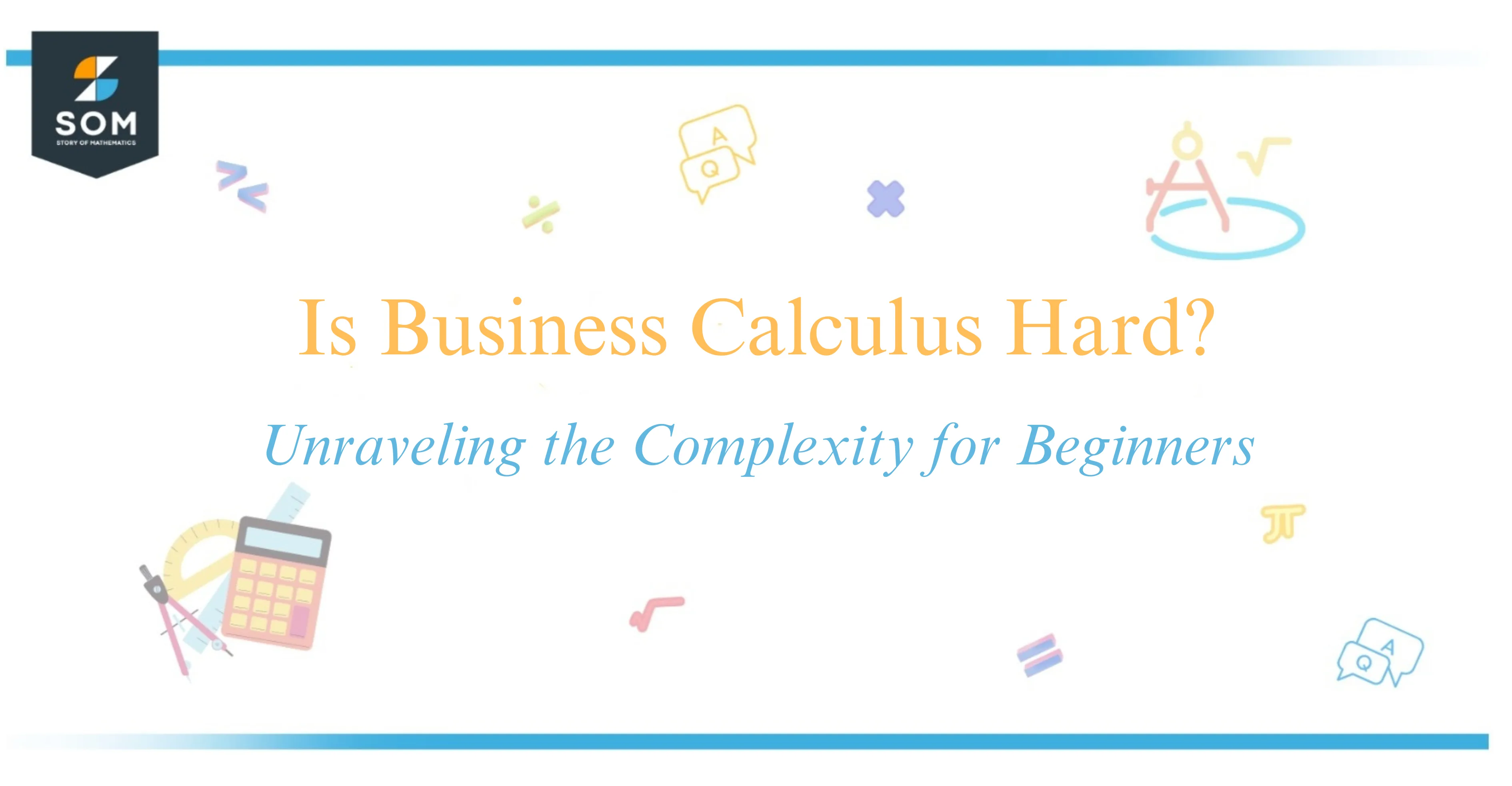JUMP TO TOPIC

Yes, Business Calculus can be challenging for many students, but it is typically less intricate than the more theory-intensive calculus courses required for science and engineering majors.
In my experience, Business Calculus focuses more on practical application and less on the theoretical aspects. It is designed for those pursuing a business degree, emphasizing methods relevant to business scenarios, like maximizing profit and minimizing costs.
As an undergraduate subject, it brings to light essential concepts such as derivatives and integration at a basic level, with a particular emphasis on functions related to economics.

The difficulty of the course can vary depending on your background and affinity for mathematics. Yet, it’s essential to approach it with the understanding that, like any college-level class, it requires dedication and effort to grasp the concepts thoroughly.
Understanding Business Calculus Concepts
In this section, I’ll guide you through the fundamental concepts of Business Calculus and how they apply to real–world business scenarios.
Core Calculus Principles
To grasp Business Calculus, a solid understanding of basic calculus principles is essential. I’ve found that focusing on the core topics like limits, derivatives, integrals, and their applications helps establish a strong foundation.
It’s crucial to be comfortable with the notion of a limit, expressed as $\lim_{x \to c} f(x)$, because it forms the basis for differentiation and integration—two cornerstone operations in calculus.
Additionally, mastering differentiation and integration techniques, such as the chain rule for derivatives $\frac{df(g(x))}{dx} = f'(g(x))g'(x)$ and basic integration methods, paves the way for solving more complex problems. Understanding functions and their behaviors is also integral to Business Calculus, as many problems revolve around analyzing function models.
Key Business Applications
Business Calculus directly addresses the quantifiable aspects of business through concepts like marginal analysis and elasticity of demand. The marginal analysis utilizes derivatives to determine the additional cost or revenue derived from increasing output by one unit, represented by $\frac{dC}{dQ}) or (\frac{dR}{dQ}$, where (C) is cost, (R) is revenue, and (Q) is quantity.
The elasticity of demand, which measures how the quantity demanded of a good responds to a price change, relies on the concept of implicit differentiation. It helps businesses understand their consumers and make pricing decisions that can lead to optimal profit.
| Business Concept | Calculus Application |
|---|---|
| Marginal Analysis | $\frac{df(x)}{dx}$ |
| Elasticity of Demand | $\frac{d}{dp} (p \cdot q(p))$ |
| Revenue Optimization | Application of integrals |
Tackling Calculus Problems
When working through calculus problems, consistent practice and review are my best strategies for success. Homework assignments often mirror the types of questions that appear on quizzes and the final exam. These problems typically include real-world business scenarios involving cost, revenue, and profit maximization.
| Problem Type | Example Problem |
|---|---|
| Differentiation | Find the derivative of the cost function $C(Q) = 7Q^2 + 15Q + 100$ to determine marginal cost. |
| Integration | Integrate the demand curve $D(p) = \frac{100}{p}$ to find consumer surplus. |
| Applications of Integration | Calculate the total profit over a specified price range by integrating the profit function (P(x)). |
My advice for students is to ensure a strong grasp of algebra and, to a lesser extent, trigonometry, as these subjects form the basis of Business Calculus problems. Lastly, students shouldn’t hesitate to seek explanations from their professors and utilize resources like textbooks and practice exams for additional examples and clarification.
Conclusion
In my experience, the perception of difficulty in business calculus can vary greatly among students. Some find the emphasis on real-world application quite helpful. Instead of abstract computations, I’ve noticed that understanding comes easier when problems are framed in a familiar context.
I recognize that integration represented as $\int f(x) ,dx$, can intimidate newcomers. However, with business calculus typically requiring fewer integration methods, the learning curve isn’t as steep. While challenging, mastering just a couple of techniques is usually sufficient.
My peers often express relief that advanced topics like trigonometry are not a major component, and the number ‘e’, an important constant approximately equal to 2.71828, is often as complex as numbers get here. For those worried about tackling hard mathematics, business calculus may come as a pleasant surprise.
Personally, I found that a steady study routine and practical application of concepts were the keys to overcoming initial hurdles. I encourage students to approach business calculus with an open mind, as it can be quite manageable with the right mindset and resources.
